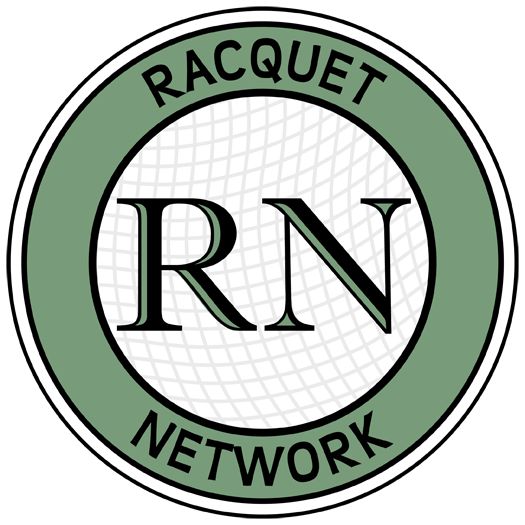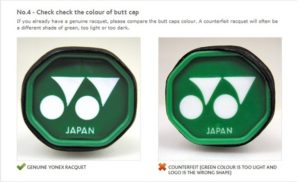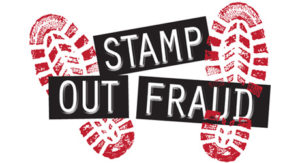 Ian asks: “Why do you charge a deposit for demo racquets when nobody else does?”
Ian asks: “Why do you charge a deposit for demo racquets when nobody else does?”
It’s a good question. But it’s not entirely a fair question.
First of all, the majority of sporting goods stores do not offer racquet demo programs. Most of those who do are pro shops that are set up in clubs where members are present and can easily demo a racquet and bring it back in a couple of hours. So the pro shop treats the demo program like a extra service for its dues-paying members.
There simply aren’t a lot of free standing retail stores that offer demo programs. Those that do typically offer a very small number of frames for demo and charge full retail price for the frame at the point of sale.
Racquet Network, by contrast, offers a large range of frames for tennis, squash, badminton and pickleball. The vast majority of these frames are new — from the current season — and most are on sale. On our wall today, for example, we have nearly 100 frames for our customers to demo.
So back to the central premise of Ian’s question: “Why do we charge a deposit for demo racquets?”
Terms of Service
First, let’s be clear. Not only do we require a deposit, but our Terms of Service further specify that the deposit is refundable only as a store credit and that that credit can only be applied to the purchase of a racquet.
This is clearly laid out on our website in the Terms of Service. It is clearly stated in all of our brochures about our demo program. Our staff clearly explain this to everyone who takes out a demo racquet. And just to be sure that everybody understands the Terms of Service, everyone who takes out a demo racquet signs a card indicating that they understand and agree with these terms.
We do this because we want to make it absolutely clear that the only people who should be taking out demo racquets are people who intend to buy a racquet from us.
Lessons Learned
Sadly, we didn’t always do things this way. When we first opened our store, we didn’t take a deposit at all. In fact the first summer we were open, a young man (Alex) and his father (Ivan) took two tennis racquets out for demo the first week of July. They didn’t return the them until the last week of August.
Two days after returning them, they brought in two of the same racquets that they had just purchased at Sport Chek and asked us to string them. So to sum up, we provided the service. They used our racquets all summer and decided that they liked them. Then they returned the demos to us and bought new racquets from a store that did not offer them a demo service.
Needless to say, we learned a lesson. From that point forward, we had a one-week limit on racquet demos. But we weren’t done yet. We had a few more lessons to learn about how some players abuse unconditional demo programs.
Lesson Two
Lesson Two started the following winter and continued over the next two years. A customer who worked up in Fort MacMurray came in to demo a badminton racquet. He worked up north all week and played badminton on Wednesday evenings, then came home every weekend. Over the next two years, he came into the store almost every weekend, returned one racquet and took out another. Eventually, he returned his last racquet and stopped coming. We never saw him again.
From that point forward, we started charging a deposit for demo racquets. We figured if we were going to bear the material costs of maintaining demo racquets and the personnel costs of tracking them, we should require customers to spend some money at the end of the process.
Lesson Three
Lesson Three in the demo-racquet-school-of-hard-knocks came in our second winter operating as a full service racquet store. By this time our demo program was rocking. On any given day we had 20 to 30 demos out and a list of people waiting for the most popular racquets. Our demo program was so active that the staff at our racquet tech desk would spend about 30 per cent of their shift on demo racquets. In fact, they were so busy tracking demos that they often didn’t have time to string racquets.
At the end of that season we analyzed the data from our demo program and learned three new lessons.
Lessons Four & Five
Lesson Four: Less than a third of the customers who demoed racquets ended up buying one. In most cases, they just turned their store credit into string for their old racquet. Some turned it into shoes, which they were going to have to buy anyway. This analysis made it clear that most customers were just demoing so that they could use our racquets while theirs was getting re-strung. In other words, most players were using our demo program as a free rental service.
Lesson Five: Customers who did intend to purchase a racquet from us often had to wait two weeks or more to get their hands on popular demo racquets because they were being used by players who didn’t intend to buy them. In fact, our analysis determined that customers who demoed but ultimately didn’t buy were twice as likely to keep the demos out longer than they were allowed to and three times more likely to return demo racquets in poor condition.
Lesson Six
Lesson Six: The final lesson we learned about demo racquets that season was perhaps our most important. We learned that customers who demo and then buy usually do so within two weeks of starting the demo program. By contrast, customers who spend more than a month in the demo program, rarely buy a new racquet. So what exactly are we accomplishing here? Quite clearly, a demo program that lasts more than a month isn’t serving the customer and it certainly isn’t benefiting our business.
Lesson Six was critical to our thinking about our demo racquet program. It was at that point that we realized that we had to create some new rules that would keep our demos out of the hands of people who were unlikely to buy so that customers who did intend to buy would be able to try them immediately.
What We Learned
Lesson Six led us to two important new conclusions about our demo program.
Conclusion 1: The purpose of a demo racquet program is to give customers who intend to buy a racquet from us an opportunity to try that racquet. So it is up to us the ensure that that racquet is available for them to try when they want to try it. If that racquet is out being used by players who do not intend to buy a racquet from us, then we have just failed our customer.
Conclusion 2: If we offer free racquet demos to people who do not intend to buy from us, so many people take advantage of the program that we end up spending a fortune managing our demo inventory. As a result, we will have to raise our prices across the board.
In the winter of 2017 we changed our rules and created a brand new demo program to serve customers who intend to buy a racquet from us. This new program, briefly described at the start of this article, makes it clear that players who do not intend to buy a racquet in the next four weeks should not take out a demo racquet.
Our New Demo Program
Our demo program is offered as a service to customers who are in the market for a new racquet. It is not a loaner program. It is not a program under which you get to take out a new racquet while your old racquet is getting re-strung. The highest priority of our new demo program is the ensure that customers who want to purchase hot new racquets have an opportunity to try them, which means they need to be available when the customer wants to try them.
Players who want to use loaner racquets can do so. We have a program for that. It is available to all members of Squash Calgary, Tennis Calgary, Badminton Calgary and Pickleball Calgary. But is a different program entirely from our demo program.


 Most people don’t think much about return fraud or warranty fraud. And why should they? Most people are honest, so they aren’t affected by such nefarious things. Right?
Most people don’t think much about return fraud or warranty fraud. And why should they? Most people are honest, so they aren’t affected by such nefarious things. Right?